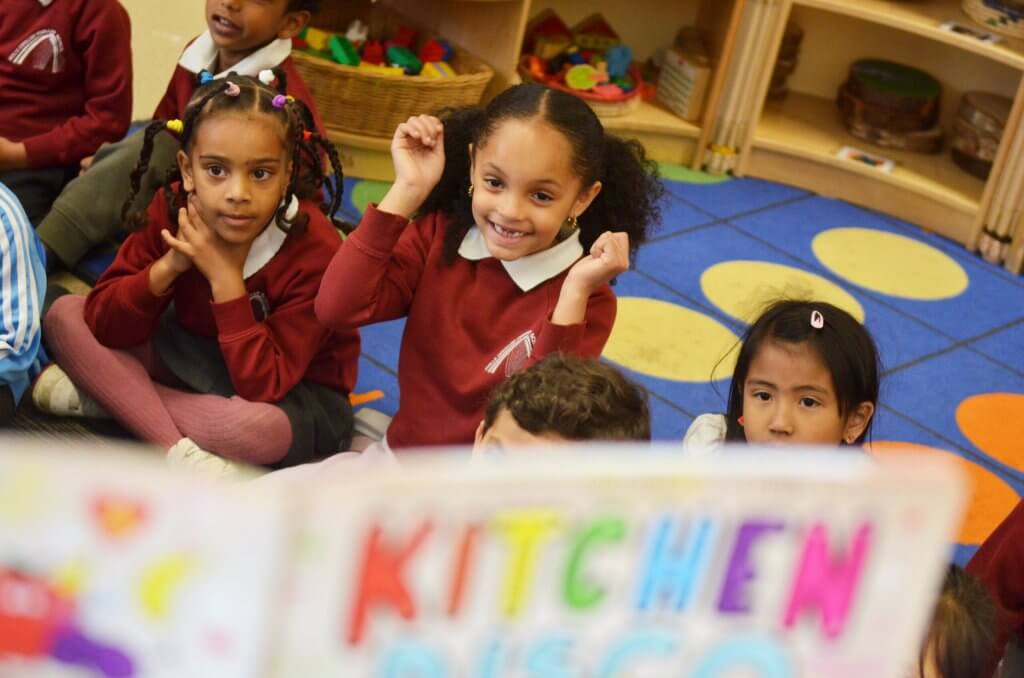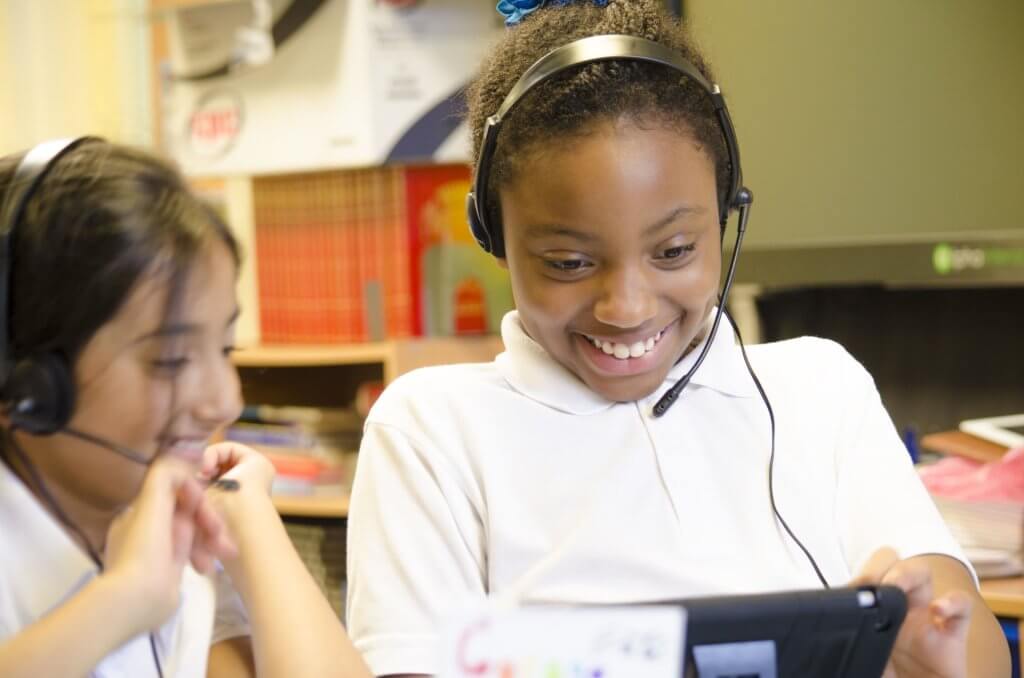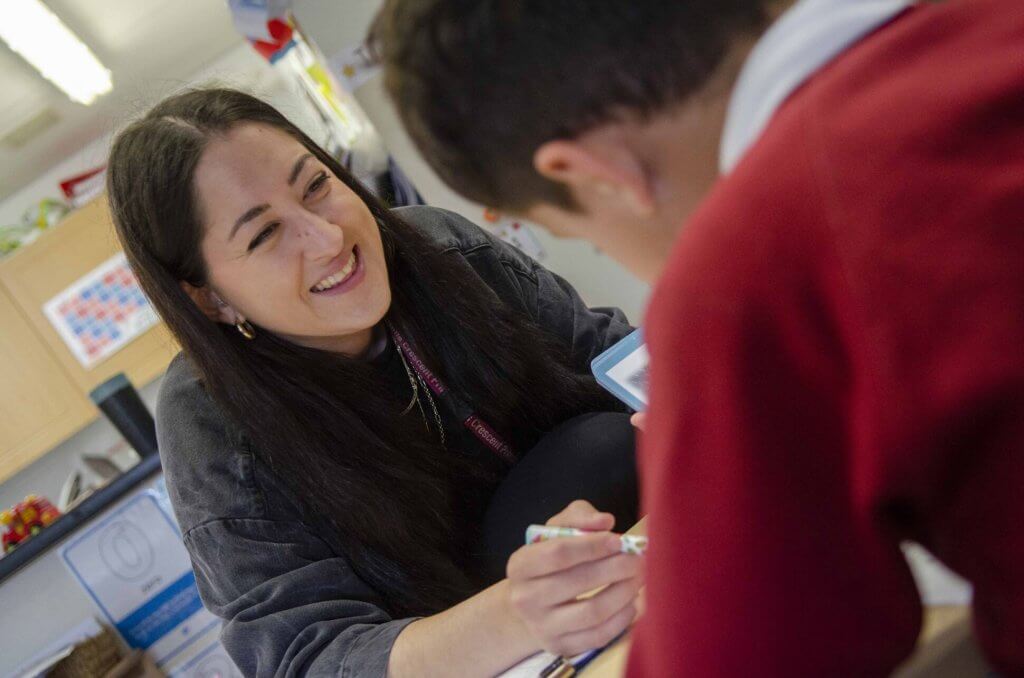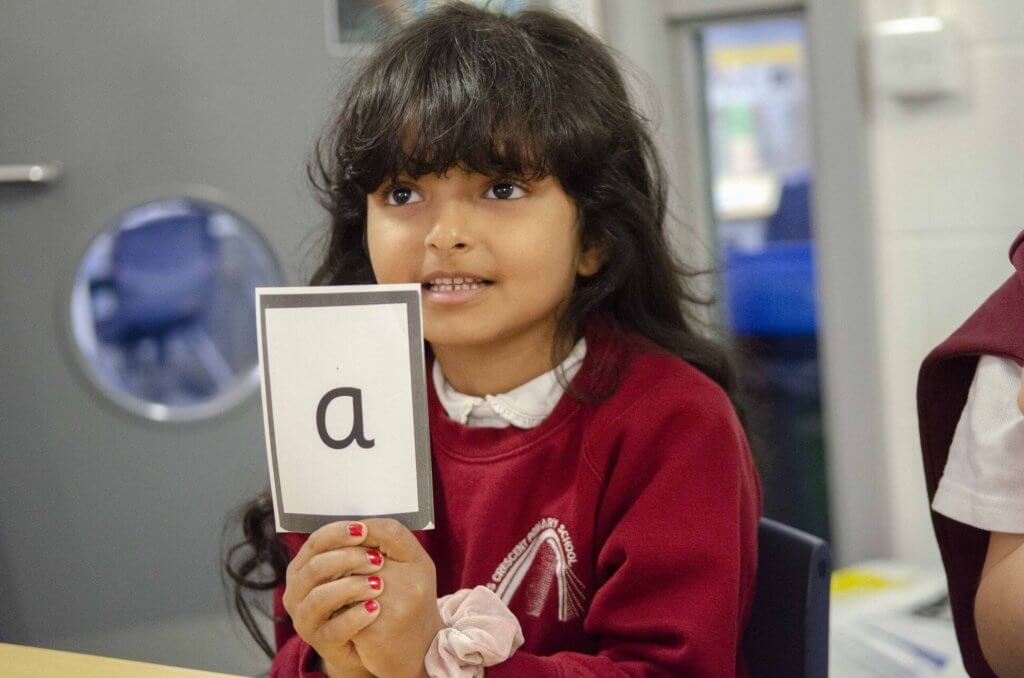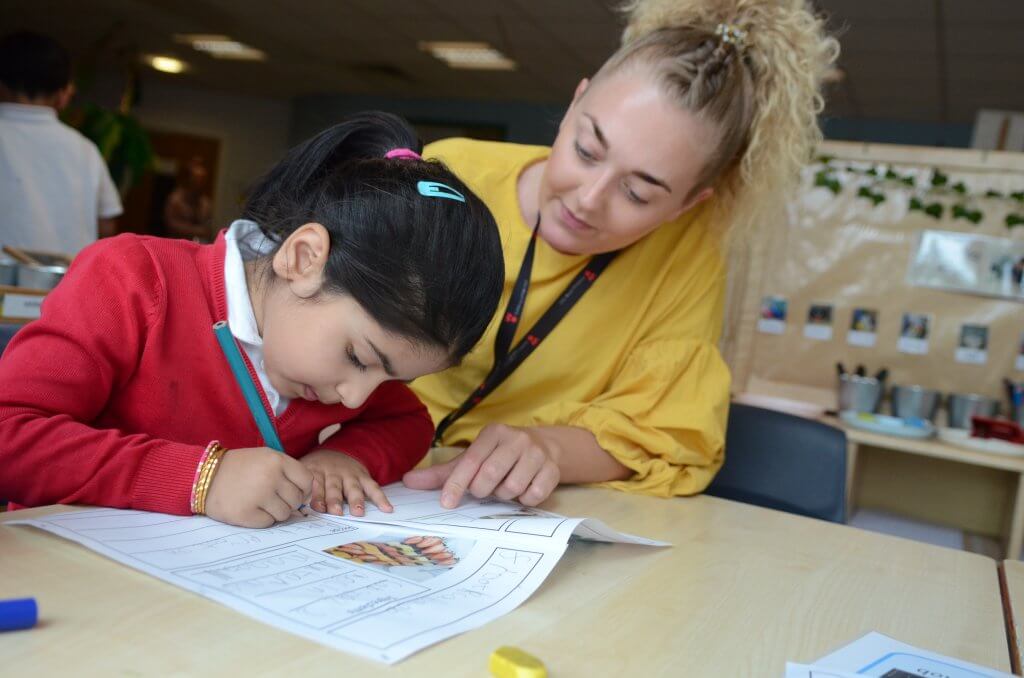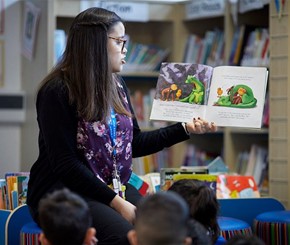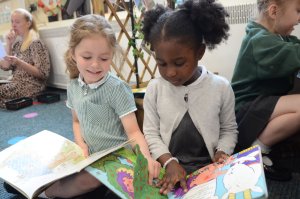The Reading Framework was published by the Department for Education just before the summer break. Now that pupils and staff are more settled, baseline assessments have been completed and restrictions have been eased, we can turn our attention properly to this guidance and the impact it has on Literacy leadership and practice. Reactions to the framework were mixed, but whatever your personal opinion, there are some important implications for practice right across the literacy curriculum. The framework is clear, whilst the focus is reading, reading cannot be viewed alone, it is interlinked with spoken language, vocabulary and writing.
Here are our top ten takeaways:
1. Don’t forget about the importance of talk and language.
Too often, conversations around reading focus on decoding and reading comprehension, but really the foundations are built much earlier, through spoken language, listening and vocabulary development. The framework explores language comprehension in detail, giving plenty of food for thought about how you can prioritise spoken language in school. The guidance explores how to build a language-rich environment, planning explicitly to support language comprehension through considering questions such as:
- What do we want children to know and think about?
- What vocabulary is associated with this knowledge and thinking?
- How can we engage the children in back and forth talk that supports their knowledge and thinking?
- What photos could we take that would reinforce the vocabulary and language after an activity or visit?
- Which books could be read aloud and shared before and afterwards?
- Which songs might introduce or reinforce the vocabulary?
The guidance makes it clear that a language-rich environment depends on back and forth interactions between adults and children, ensuring the collection of evidence doesn’t get in the way of high quality conversations. How often do back and forth interactions happen in your setting? Are there any specific barriers to these in your setting? The document also underlines the importance of teaching children how to listen, and scaffolding their talk. You might want to think about how spoken language is currently taught throughout your school – is it explicitly taught or simply used as an activity when teaching other concepts?
2. Think about how storytimes can have real power.
One of the joys of teaching is sharing a great book aloud with pupils. The guidance focuses on the importance of this, but also challenges us to think about what reading aloud should look like. It encourages staff to fully live the story, planning in repeated readings of key texts, and preparing readings to ensure children get the most out of them. The guidance suggests reading a text for the first time, letting the text “…weave its own magic, with no questions, no explanations and no requests for the children to predict what might happen,” then in the second reading, introduce “…asides, voices and actions can explain the meanings of new words in context.”
What does reading aloud look like in your school? Do staff prepare readings? Is there any repetition of texts? Are poetry, songs, plays and non-fiction shared aloud too?
3. Put careful thought into book choices.
Whether choosing books for storytime or for sharing in different ways, it’s crucial to think carefully about the texts we are sharing with pupils. The guidance challenges us to ask whether the books we share:
- Elicit a strong response – curiosity, anger, excitement, laughter, empathy?
- Have a strong narrative that will sustain multiple readings?
- Extend children’s vocabulary?
- Have illustrations which are engaging and reflect children from all backgrounds and cultures?
- Help children connect with who they are?
- Help children to understand the lives of people whose experiences and perspectives may be different from their own?
It also suggests identifying a core set of wide-ranging stories to share in each year group, refreshing this list regularly, and sharing with parents so they can share the same books at home where possible. As a leader, consider how you might choose a core group of texts for each year group, whilst retaining teachers’ autonomy – could you choose particular themes to focus on across school? Could you involve the whole staff in the choices?
4. Consider how, where and when Phonics is taught, as well as the scheme.
There has been much conversation about the DfE’s validation of SSP schemes and the removal of Letters and Sounds. The framework explores this in detail in Appendix 7, stating that, “It is not mandatory for schools to use a programme from the DfE’s list. Schools that choose to develop their own SSP programme, or choose a programme that has not been validated, should ensure their programme meets the guidance on good SSP teaching in this document. They are advised to read these pages closely to consider how the ideas can be reflected in their own practice… Individual schools may decide which phonics programme they use. It is important that schools look carefully at a range of programmes and the DfE recommends they consider an SSP programme from the validated list.”
Any scheme can be taught well or poorly, so you do need to consider your implementation carefully and monitor to support best practice. The framework includes guidance on what good Phonics teaching looks like, including a focus on where and when Phonics is taught. The guidance recommends strong routines are in place, in a quiet environment, with catch-up and intervention happening at the same time and in the same place every day too. It also explores the importance of all children learning actively throughout, instead of waiting to learn through the use of turn-taking and hands-up, amongst many other things. You might wish to use the audits included in the framework to support your monitoring going forward. For schools who are considering changing the scheme they use for Phonics, you might find our Choosing an SSP Programme audit helpful. This document takes the points raised in Appendix 7 of the framework and adds to them, to support you in making the best decision for your setting.
5. Build in spelling and handwriting throughout.
Phonics is not just about decoding words, but also being able to write and spell fluently. The framework explores the place of spelling and handwriting both within Phonics lessons and throughout the curriculum. Within Phonics lessons, the guidance expects children to:
- Practise segmenting spoken words into their individual sounds
- Choose which letter or letters to represent each sound
- Practise a correct pencil grip
- Be taught the correct start and exit points for each letter, which should not include ‘lead-in’ strokes from the line
- Respond to dictation from the teacher, practising writing words in sentences that include only the GPCs and exception words they have learnt.
How much writing happens in your Phonics lessons? How successful is it? Are pupils able to sit at a table, in the correct position and with the right posture for writing, as the guidance recommends?
6. Provide access to both decodable books and other, higher level texts.
Again, decodable books have been a key focus for schools over the past two years since the new OFSTED framework was published. The framework doubles down on the importance of children accessing decodable books, “…running alongside, or a little behind the teaching of GPCs,” whilst also emphasising the need for pupils to listen to and engage with “…books that include words beyond those they can read for themselves.” You may want to consider monitoring how well-matched decodable reading books are by engaging in some pupil voice – can each child ‘win’ at reading every time they read? Or are they labouring over each book, at risk of losing enjoyment? Are children being given the opportunity to also engage with books that are not fully decodable, but, if the book is shared to the group or whole class, the children can benefit from the vocabulary and knowledge that the books provide, or are useful for supporting comprehension skills. (See Reading Gems Part One and Part Two). As the simple view of Reading (Gough and Tunmer, 1986) suggests: developing decoding skills needs to be at the same time as developing comprehension skills; rather than in isolation.
7. Plan in opportunities for catch up and clear interventions.
Children learn at different rates, and it’s no different for reading. The framework emphasises the importance of catching children at risk of falling behind straight away, and putting in place further practice and application to enable them to catch-up with their peers. These ‘catch-up’ sessions should be focused on securing Phonics concepts the children have not yet grasped, and be consistent with the school’s SSP programme. Where children need additional support, the guidance is clear that this should be intensive, focused on the aspects of reading they specifically need help with to succeed, and may involve missing other lessons. Most importantly, the framework makes it very clear that these children need more not just different, stating that, “To continue to develop these pupils’ language and vocabulary, and encourage a love of reading, their class teachers should make sure that they listen to and discuss the same texts that their peers read in their English lessons. However, then asking them to read the texts by themselves and complete written comprehension activities wastes their time and further demoralises them, because their decoding skills do not yet allow them to read well enough.”
Think about your offer for children who need additional support – do they listen and discuss the same texts as their peers? Do they get more teaching, or just different teaching?
8. Give sufficient time to reading from the very start.
Reading should thread throughout your curriculum with time build in for language comprehension, Phonics, fluency, meaning and enjoyment. The framework unpicks this further, stating that it is the headteacher and literacy leader’s job to timetable the EYFS and Y1 curriculum to include a storytime, a poetry/singing time and one or more Phonics sessions. It also states the expectation that Phonics starts from day one in Reception, building up to around an hour per day by the end of that year, to include teaching, practice and application. Take time to look at your timetables together – are these expectations being met in practice?
9. Engage in good professional development.
We know that teacher and staff professional learning is key to pupils’ progress, and is the subject of a new EEF Guidance Report: Effective Professional Development. The framework zones in on the importance of professional development, expecting Literacy Leaders and Headteachers to plan in clear training, practice and coaching opportunities to support staff to teach reading effectively. This is particularly crucial for any staff who are leading catch-up and intervention sessions with pupils, as well as those leading Phonics teaching. Think about your own training offer for staff. What happens with the induction of new staff? How many opportunities are built in for staff to practice together? How often do you, or other staff, coach one another for reading specifically?
10. Keep going with older pupils.
The guidance is clear that a focus on reading must continue throughout children’s time at school, building upon the work done in EYFS and KS1. It encourages teachers to read aloud to pupils every day, no matter their age group, and build in opportunities to read often right across the curriculum. On spelling, handwriting and grammar, the framework is just as clear, emphasising the importance of developing an effective spelling programme and teaching joined handwriting, building in plenty of practice for both. One aspect which the framework delves into is the use of sentence dictation to support pupils to consolidate their transcription skills. Our spelling diagnostic assessments make use of dictation to support assessment and consolidation.
Click here to download a free example for Year 6.
The message in the guidance is very firmly that whilst the teaching of the foundations of reading begin in EYFS and Year 1, they need to continue to be a focus throughout children’s time at school. Consider how well your reading and writing curriculum builds on early learning at your school – are your policies and procedures supporting children to gain fluency?

All in all, the guidance is clear – reading and the wider literacy curriculum must be prioritised as the key that unlocks curriculum learning, both in early education, and beyond.
We will be exploring the framework, and how it will impact you, in much more detail together at the first EYFS Network on 11th November and also at the first Literacy Leads Network of this academic year on the 25th November. Alongside discussing how the framework can positively impact practice at your school, we will also discuss statutory updates and latest research; delve into some top texts and share practical ideas and takeaways. There is, like always, the chance to network and catch up with like minded individuals over a warm drink and a tasty treat too.
If you are reviewing your Reading curriculum and have questions, or feel you would benefit from some support, please take a look at our One Education School Development and Literacy Brochure or contact our school development team by emailing laura.lodge@oneeducation.co.uk

